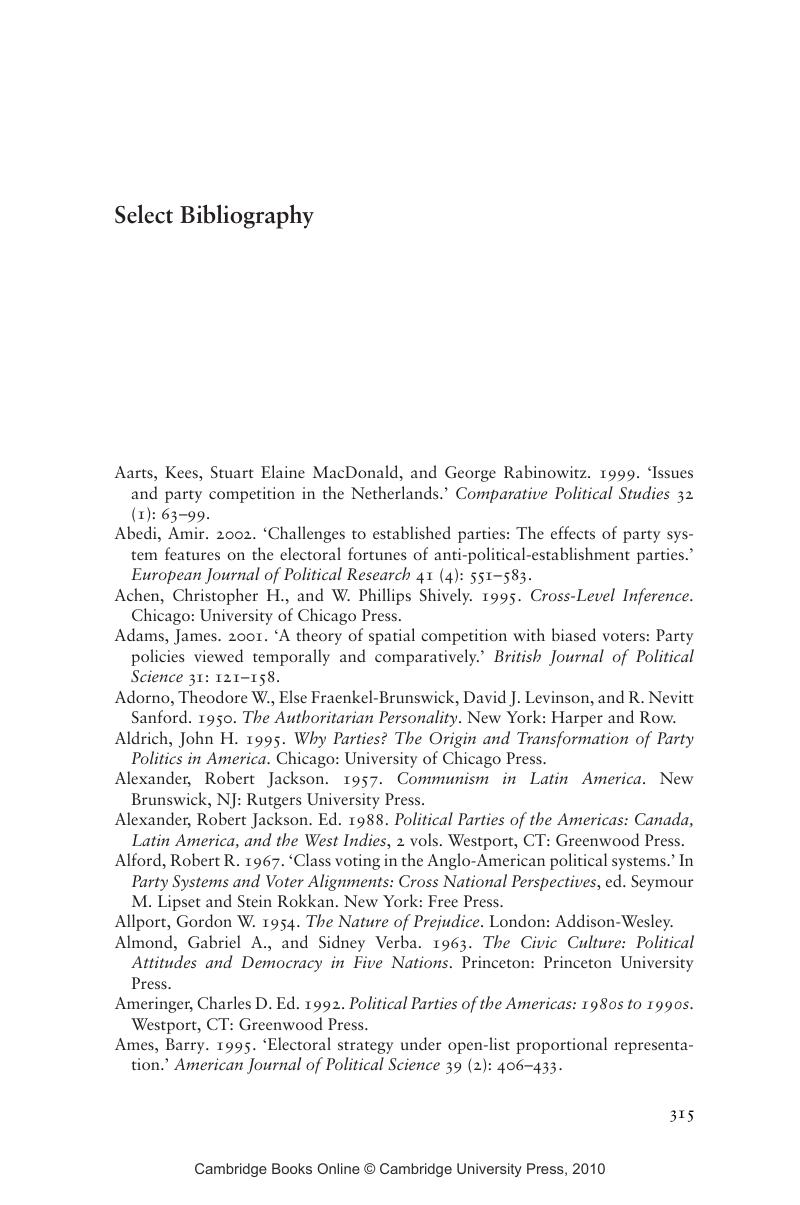Select Bibliography
Published online by Cambridge University Press: 03 December 2009
Summary

- Type
- Chapter
- Information
- Radical RightVoters and Parties in the Electoral Market, pp. 315 - 338Publisher: Cambridge University PressPrint publication year: 2005



